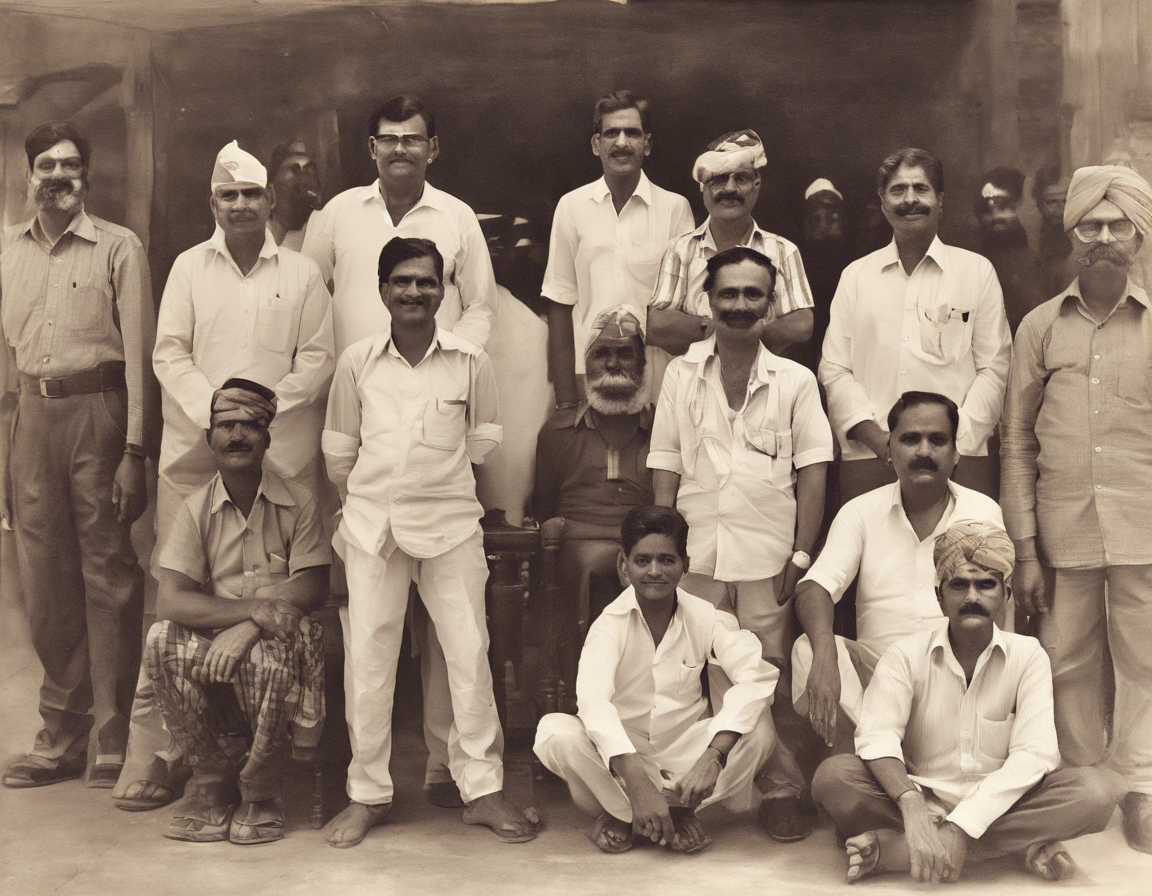The Constitution of India, known as Bharat Ka Samvidhan in Hindi, is the supreme law of the country. It lays down the framework that defines the political principles, establishes the structure, procedures, powers, and duties of the government institutions, and sets out the fundamental rights, directive principles, and duties of citizens. Adopted on January 26, 1950, the Constitution of India is the longest written constitution of any sovereign country in the world, containing 395 articles in 22 parts and 8 schedules.
History of the Constitution of India
1.1 Pre-Independence Struggles:
India’s journey towards independence marked several milestones, including the formation of the Indian National Congress in the late 19th century, the Non-Cooperation Movement, the Civil Disobedience Movement, and the Quit India Movement. These movements laid the foundation for a free and democratic India.
1.2 Constituent Assembly:
The Constituent Assembly of India was established in December 1946 to draft the Constitution. Dr. B.R. Ambedkar, often referred to as the ‘Father of the Indian Constitution,’ chaired the Drafting Committee, which was entrusted with the task of preparing the final draft.
1.3 Adoption and Enactment:
After almost three years of deliberations, the Constituent Assembly finally adopted the Constitution on November 26, 1949. It came into effect on January 26, 1950, marking the birth of the Republic of India.
Key Features of the Indian Constitution
2.1 Preamble:
The Preamble of the Indian Constitution outlines the ideals and objectives of the Constitution. It declares India to be a sovereign, socialist, secular, and democratic republic that aims to secure justice, liberty, equality, and fraternity for all citizens.
2.2 Fundamental Rights:
Part III of the Constitution guarantees fundamental rights to all citizens, including the right to equality, right to freedom, right against exploitation, right to freedom of religion, cultural and educational rights, and right to constitutional remedies.
2.3 Directive Principles of State Policy:
Part IV of the Constitution lays down the directive principles that guide the state in enacting laws to achieve a socialistic society, promoting the welfare of the people, securing a just and equitable social order, and ensuring the dignity of individuals.
2.4 Federal Structure:
The Indian Constitution establishes a federal system of government with a division of powers between the Union (Centre) and the States. It includes three lists – Union List, State List, and Concurrent List – enumerating the subjects on which each level of government can make laws.
2.5 Independent Judiciary:
The Constitution provides for an independent judiciary to safeguard the rights and liberties of citizens. The Supreme Court is the highest judicial body in the country, with the power of judicial review to ensure the constitutionality of laws.
2.6 Parliamentary Form of Government:
India follows a parliamentary form of government where the President is the ceremonial head of state, and the real power is vested in the Council of Ministers headed by the Prime Minister, who is the head of government.
2.7 Amendments:
The Constitution of India is not rigid but flexible, allowing for amendments to adapt to changing circumstances. Amendments can be made by a two-thirds majority of members present and voting in each house of Parliament.
Fundamental Rights in the Indian Constitution
3.1 Right to Equality:
Article 14-18 of the Constitution ensures equality before the law, prohibits discrimination on grounds of religion, race, caste, sex, or place of birth, and guarantees equality of opportunity in matters of public employment.
3.2 Right to Freedom:
Article 19-22 guarantees various freedoms, such as the freedom of speech and expression, the right to assemble peacefully, the right to form associations or unions, the right to move freely throughout the territory of India, and the right to reside and settle in any part of India.
3.3 Right against Exploitation:
Articles 23 and 24 prohibit human trafficking and forced labor and prohibit the employment of children in hazardous occupations.
3.4 Right to Freedom of Religion:
Articles 25-28 guarantee the freedom of conscience and the right to profess, practice, and propagate religion. The state is required to maintain a secular stance and not promote any religion.
3.5 Cultural and Educational Rights:
Articles 29 and 30 protect the rights of minorities to conserve their language, script, or culture and establish and administer educational institutions of their choice.
3.6 Right to Constitutional Remedies:
Article 32 enables individuals to move the Supreme Court directly for the enforcement of fundamental rights through writs such as habeas corpus, mandamus, prohibition, certiorari, and quo warranto.
Frequently Asked Questions (FAQs)
Q1. What is the significance of the Preamble in the Indian Constitution?
The Preamble declares the ideals and objectives of the Constitution, serving as a guiding light for the interpretation and implementation of its provisions.
Q2. How many schedules are there in the Indian Constitution, and what do they contain?
There are 12 schedules in the Indian Constitution, containing lists, laws, forms, and other provisions related to various administrative and legislative matters.
Q3. What is the difference between fundamental rights and directive principles of state policy?
Fundamental rights are justiciable and enforceable through courts, while directive principles are non-justiciable but provide a roadmap for the government to implement social and economic reforms.
Q4. How can the Indian Constitution be amended?
The Constitution can be amended by a two-thirds majority of members present and voting in each house of Parliament, followed by ratification by at least half of the state legislatures.
Q5. What is the procedure for resolving disputes between the Centre and States under the Indian Constitution?
The Constitution provides for the establishment of inter-state councils and the appointment of the Finance Commission to address disputes and ensure fiscal federalism between the Centre and States.
In conclusion, the Constitution of India stands as a testament to the visionary principles and values enshrined by the founding fathers of the nation. It continues to be a dynamic document that adapts to the evolving needs of Indian society while upholding the ideals of justice, liberty, equality, and fraternity for all citizens.
